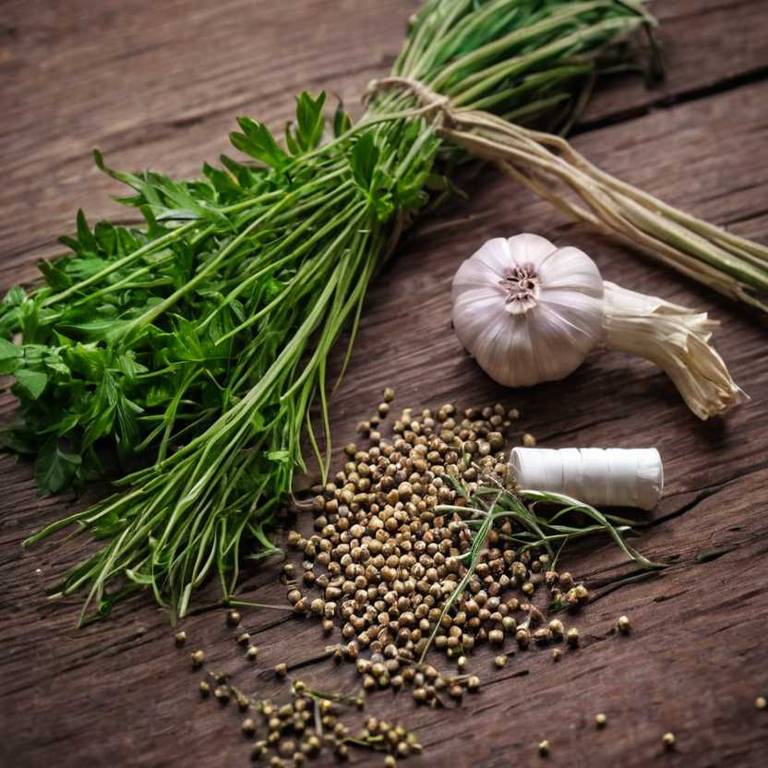By Leen Randell
Updated: Jul 20, 2024
10 Medicinal Constituents Of Allium Cepa (Onion)

Allium cepa has active constituents such as flavonoids, saponins, and phenolic compounds, which possess antimicrobial, anti-inflammatory, and antioxidant properties.
These constituents help prevent chronic diseases like heart disease and cancer. For example, the flavonoid quercetin has been shown to improve cardiovascular health by reducing inflammation and improving blood lipid profiles.
This can significantly reduce the risk of heart attack and stroke, thereby improving people's quality of life.
This article explains in details the 10 best active constituents of Allium cepa.
1. S-allyl cysteine
Allium cepa s-allyl cysteine is a bioactive compound found in high amounts in onions.
This sulfur-containing amino acid has been extensively studied for its potential health benefits. S-allyl cysteine has been shown to exhibit antibacterial, antiviral, and antifungal properties, as well as possessing anti-inflammatory and antioxidant activities.
It may also play a role in reducing the risk of chronic diseases such as cardiovascular disease and cancer due to its ability to scavenge free radicals and modulate the immune system.
2. Diallyl disulfide
Allium cepa diallyl disulfide is a potent bioactive compound derived from the bulb of the plant.
This sulfur-containing molecule has been extensively studied for its numerous health benefits, including antimicrobial, anti-inflammatory, and anticancer properties.
Diallyl disulfide has been shown to exhibit antioxidant activity, inhibit platelet aggregation, and possess neuroprotective effects, making it a valuable component in the prevention and treatment of various diseases.
3. Quercetin
Allium cepa quercetin is a powerful flavonoid compound found in its bulb and skin.
This bioactive molecule has been extensively researched for its various health benefits, including antioxidant, anti-inflammatory, and antimicrobial properties.
Quercetin in onions has been shown to possess protective effects against chronic diseases such as cardiovascular disease, cancer, and neurodegenerative disorders, making onions a nutritious addition to a healthy diet.
4. Kaempferol
Allium cepa kaempferol is a flavonoid compound found in its juice and oil.
It has been studied for its various bioactivities, including antioxidant, anti-inflammatory, and antimicrobial properties.
Kaempferol has been shown to exhibit potential therapeutic effects, such as inhibiting the growth of certain cancer cells and improving cardiovascular health by reducing cholesterol levels and platelet aggregation.
5. Isoorientin
Allium cepa isoorientin is a flavonoid compound found in onions and other members of the Allium genus.
It has been isolated from various parts of the onion plant, including the leaves, stems, and bulbs.
Isoorientin has been reported to possess several bioactivities, including antioxidant, anti-inflammatory, and antimicrobial properties, which may contribute to its potential health benefits and traditional uses in medicine.
6. N-acetyl cysteine
Allium cepa n-acetyl cysteine is a powerful antioxidant compound found in its bulb.
This sulfur-containing amino acid has been extensively studied for its potential health benefits, including reducing inflammation and oxidative stress.
N-acetyl cysteine in Allium cepa has been shown to have antimicrobial and antiviral properties, making it a valuable natural remedy for various ailments.
7. Allyl methyl sulfide
Allium cepa allyl methyl sulfide is a naturally occurring sulfur compound responsible for the characteristic flavor and aroma of onions.
It is released when onions are chopped or crushed, causing tears in the eyes due to its irritating properties.
Allyl methyl sulfide is also credited with providing many health benefits, including antibacterial and antifungal properties, as well as being a natural insect repellent.
8. Diallyl mono-sulfide
Allium cepa diallyl mono-sulfide is a naturally occurring compound responsible for the characteristic flavor and aroma of onions.
This bioactive compound is formed through the breakdown of sulfoxides in onions when they are chopped or crushed, releasing its pungent properties.
Diallyl mono-sulfide has been extensively studied for its potential health benefits, including antioxidant and anti-inflammatory activities, as well as its role in reducing cholesterol levels and improving cardiovascular health.
9. S-methyl cysteine
Allium cepa s-methyl cysteine is a bioactive sulfur-containing amino acid present in onions and other Allium species.
This unique compound has been found to possess various health benefits, including anti-inflammatory, antioxidant, and antimicrobial properties.
Studies have shown that s-methyl cysteine can help reduce the risk of chronic diseases such as cardiovascular disease, cancer, and neurodegenerative disorders.
10. Alliin
Allium cepa alliin is a naturally occurring compound responsible for the pungent flavor and aroma of onions.
It is a sulfur-containing amino acid that is broken down into allicin when an onion is chopped or crushed, releasing its characteristic scent and flavor.
Alliin is also credited with numerous health benefits, including antibacterial and anti-inflammatory properties, making it a valuable component of the onion's nutritional profile.